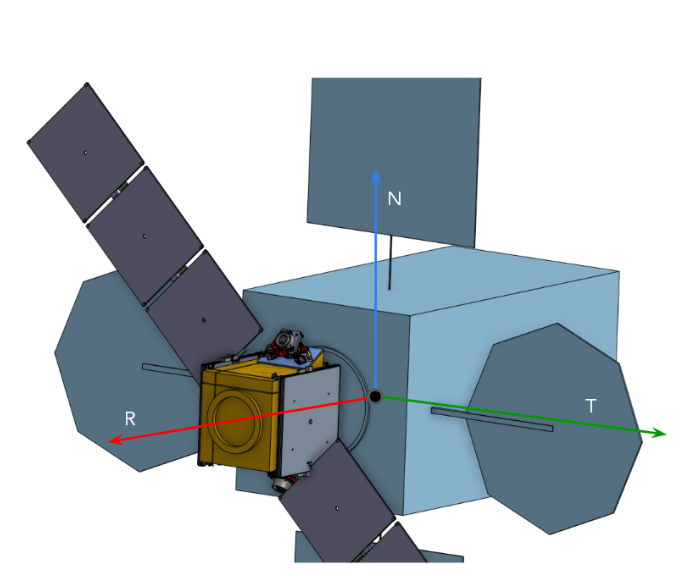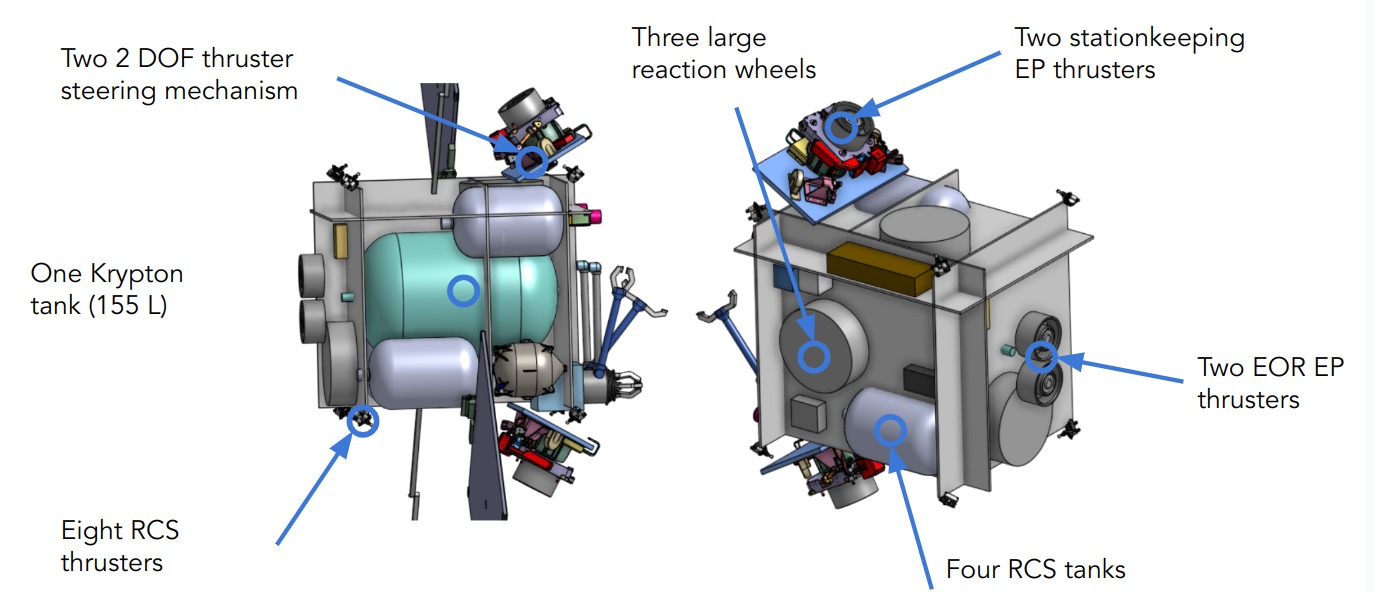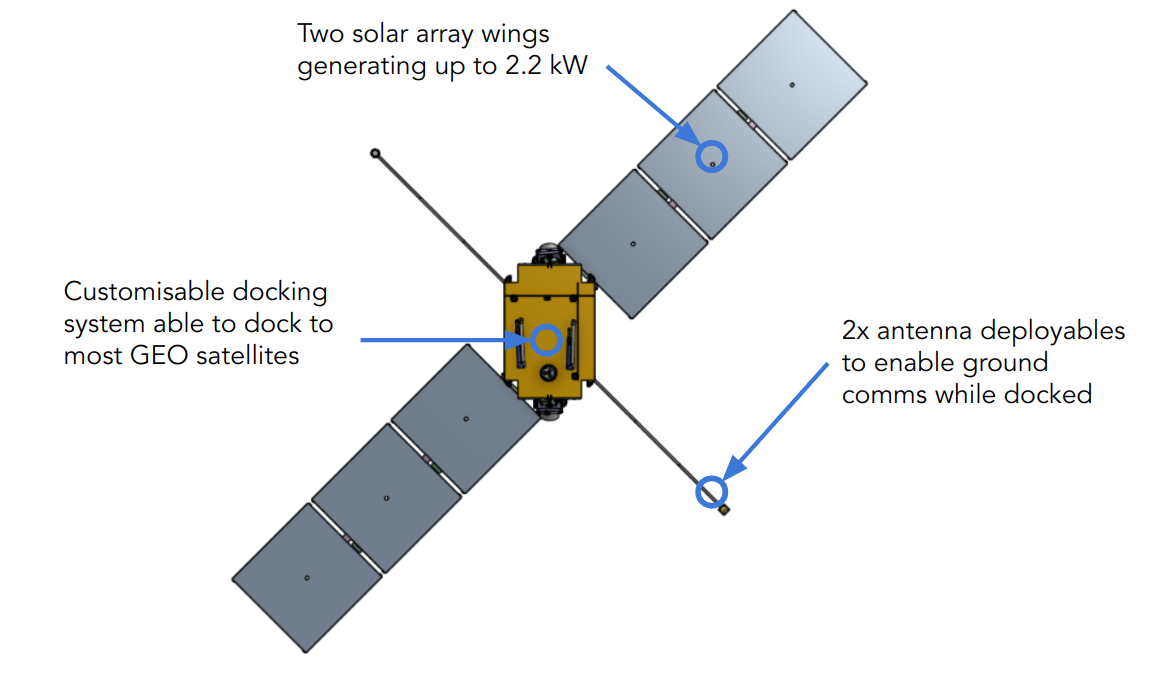Endurance Overview.

Endurance
Infinite Orbits’ Endurance project is a technical solution for extending satellite lifespans in geostationary orbit. The 750 kg servicer is equipped with Rendezvous and Proximity Operations (RPO) technology, enabling it to autonomously dock with and stabilize aging satellites. It takes over station-keeping, prolonging satellite functionality by five years and managing end-of-life disposal to a “graveyard” orbit. Designed for compatibility with most geostationary satellites, Endurance is slated for its first mission in 2026, targeting high-efficiency, on-orbit service and satellite life extension.
1. Overview of Endurance Services
In Geostationary Orbit (GEO):
- Stationkeeping:
- Service duration of up to 5 years
- Orbital Transfer:
- Capability to move the client to any GEO orbital slot or correct inclination
- Attitude Control:
- Fine attitude control with an accuracy of up to 0.04 degrees
- End-of-Life (EOL) Disposal:
- Transfer to a GEO graveyard orbit at the end of operations

2. Project Achievements and Future Goals
- Life Extension Start: Planned for 2026, marking Endurance as the first French company to achieve Life Extension.
- Development Phases:
- Phase A: Successfully completed in 2022
- Phase B:
- System Requirements Review (SRR) in Q4 2023
- Preliminary Design Review (PDR) in Q1 2024
- Establishment of Industrial Consortium
- Rendezvous (RdV) tests in progress
- Phase C:
- Critical Design Review (CDR) planned for Q4 2024
- Platform manufacture and testing
- Completion of RdV and Docking testing
- Phase D:
- Flight Model (FM) production and integration
- Acceptance testing
- Phase E:
- Launch and commissioning in Q1 2026
- EOR, RdV, docking, and life-extension operations
3. Endurance Summary
| Parameter | Specification |
|---|---|
| Mass | 310 kg (dry), 800 kg (wet) |
| Volume | 1 x 1 x 1.2 m³ |
| Launcher Compatibility | Ariane 6 / SpaceX Falcon 9 (rideshare passenger) |
| Power | Two tracking solar wings |
| Architecture | Dual string (core avionics) |
| Propulsion (PROP) | Four EP thrusters (Krypton propellant), eight RCS thrusters |
| Communications | Deployable antennas |
4. Detailed System Overview
Propulsion and Control
- Reaction Control System (RCS): Eight thrusters for maneuvering
- Stationkeeping: Two electric propulsion (EP) thrusters
- Electric Orbit Raising (EOR): Two EP thrusters
- Fuel Tanks:
- One Krypton tank with a capacity of 155 liters
- Four RCS tanks
Steering and Orientation
- Reaction Wheels: Three large reaction wheels for stabilization
- Thruster Steering Mechanism: Two degrees of freedom for precise maneuvering

5. External Features of Endurance
- Solar Arrays: Two wings capable of generating up to 2.2 kW
- Antenna Deployables: Two antennas for ground communication while docked
- Customizable Docking System: Adaptable for docking with most GEO satellites

To learn more about general organisation in a satellite platform/payload, see Platform
